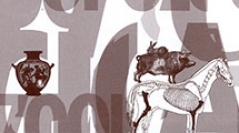

 Anthropozoologica
44 (1) - Pages 63-78
Anthropozoologica
44 (1) - Pages 63-78Bos and Cervus remains from Prepottery and Pottery Neolithic levels at Çayönü Tepesi are examined employing a multidisciplinary approach, combining the analysis of morphology, age profiles, and stable isotopes in bone collagen. The results show that the process of cattle domestication started at about the same time as three other ungulate taxa (sheep, goats and pigs), by the Channelled Building Subphase (end of Early PPNB/ beginning of Middle PPNB). Two stages are evident in the process of domestication: the initial appearance of domestic animals could be detected in the faunal remains by the appearance of some small-sized individuals and subtle changes in the kill-off patterns, as well as in the changes in stable isotope ratios of carbon and nitrogen. While hunting of wild progenitors continued, there was an overall decrease in the proportion of miscellaneous wild taxa in the assemblage. The second stage of the domestication process begins in the late-final PPNB, suggested by marked size reduction and demographic change, namely the increase of females in the assemblage, as well as dramatic increase in sheep and goats.
Çayönü Tepesi, Southeastern Turkey, Prepottery Neolithic, Domestication, Pigs, Sheep, Goats, Cattle, Red deer, Kill-off patterns, Size index analysis, stable isotope analysis.